Our work on changing physical environments:
Here at the BHRU, we study ways in which we can alter the characteristics of the physical environments around us (or choice architecture) to shape our behaviour in a healthier direction.
Click on the images below to find out more about work we have been doing in this area:
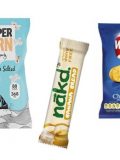
Should we change the number of less healthy food options available rather than the number of healthier options?
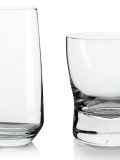
Can the shape of a glass impact on how fast we drink?
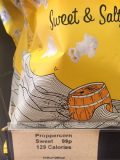
What is the potential impact of calorie labelling in worksite cafeterias?
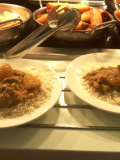
What is the potential impact of reducing portion sizes in worksite cafeterias?
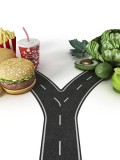
The TIPPME intervention typology for changing environments to change behaviour

Understanding interventions that change behaviour outside of conscious awareness
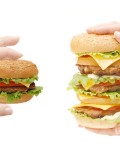
Can portion, package and tableware size increase consumption?

How can changing physical environments change behaviour?
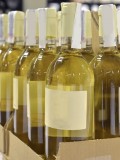
Do supermarket end-of-aisle displays affect sales of drinks?
Key studies:

Cues in our environments shape our behaviour, but little research has addressed whether healthier food cues have a similar impact to less healthy food cues. This online study examined the impact on food selection of the number of (i) healthier and (ii) less healthy snack foods available. UK adults (n=1,509) chose the food they would most like to eat from: (a) two healthier and two less healthy foods, (b) six healthier and two less healthy foods, or (c) two healthier and six less healthy foods. Compared to being offered two healthier and two less healthy options, the odds of choosing a healthier option were twice as high with four additional healthier options, while the odds of choosing a less healthy option were four times higher with four additional less healthy options. This suggests that less healthy food cues can have a larger effect than healthier ones. Consequently, removing less healthy as opposed to adding healthier food options could have greater impact on encouraging healthier selections.
Availability of healthier vs. less healthy food and food choice: an online experiment. Pechey, R., & Marteau, T. M. BMC Public Health
Access Full Text
Continue reading →
Previous studies suggest that glassware design may influence drinking behaviour, however it remains unclear whether these effects are limited to alcohol, and what the underlying mechanisms are. This study investigated the effect of glass shape on total drinking time for a soft drink, using inward-sloped, straight-sided, and outward-sloped tumblers. We explored two sets of underlying mechanisms: micro-drinking behaviours (e.g. sip size), and perceptual effects (e.g. volume judgments).
Drinking was ~20% faster from outward-sloped glasses than straight-sided ones. This extends previous research, suggesting glass shape may influence drinking speed for a soft drink. Though glass shape influences ability to judge volume (perceptual effects), we found no evidence that this related to drinking speed. Changes in the micro-structure of drinking (e.g. sip size) may be important in driving the effect of glass shape on drinking speed, and future studies, powered to test these mechanisms, are warranted.
Impact of glass shape on time taken to drink a soft drink: A laboratory-based experiment. Langfield T, Pechey R, Pilling M, Marteau TM. PLOS ONE, 2018.
Access full text.
Continue reading →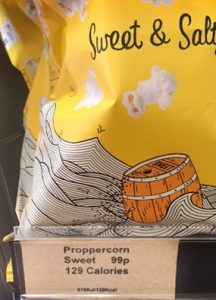 Reducing excess consumption of food and drink is core to tackling the high prevalence of overweight and obesity in the UK and elsewhere. Here we provide the results of a pilot trial estimating the potential impact of calorie labelling on energy purchased across six worksite cafeterias.
Reducing excess consumption of food and drink is core to tackling the high prevalence of overweight and obesity in the UK and elsewhere. Here we provide the results of a pilot trial estimating the potential impact of calorie labelling on energy purchased across six worksite cafeterias.
Post-intervention feedback amongst cafeteria patrons and worksite managers and caterers suggested high levels of acceptability. Several barriers to intervention implementation were identified. The predicted effect of labelling to reduce energy purchased was only evident at one out of six sites studied. Before progressing to a full trial, we propose that the calorie labelling intervention needs to be optimised, and a number of operational issues resolved.
Impact of calorie labelling in worksite cafeterias: a stepped wedge randomised controlled pilot trial. Vasiljevic M, Cartwright E, Pilling M, Lee M-M, Bignardi G, Pechey R, Hollands GJ, Jebb SA, Marteau TM, 2018
Access full text.
Continue reading →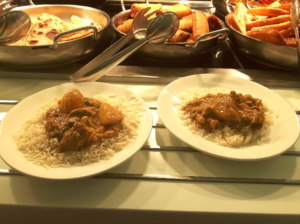
Reducing the portion sizes of foods available in restaurants and cafeterias is one promising approach to reducing energy intake, but there is little evidence of its impact from randomised studies in field settings. In this paper, we provide the results of a pilot trial estimating the potential impact of reducing portion sizes of targeted foods in worksite cafeterias. Feedback after the intervention suggested it was broadly acceptable to customers and cafeteria staff. Each of the six cafeterias showed a reduction in daily energy purchased from intervention categories, but the overall reduction across all sites of 8.9% was not statistically significant. The results of this trial suggest that reducing portion sizes could be effective in reducing energy purchased from targeted food categories, but also that future studies will need to address factors that prevented optimal implementation, including site dropout and only reducing portion sizes of a limited range of products.
Impact of reducing portion sizes in worksite cafeterias: a stepped wedge randomised controlled pilot trial. Hollands GJ, Cartwright E, Pilling M, Pechey R, Vasiljevic M, Jebb SA, Marteau TM, 2018
Access full text
Continue reading →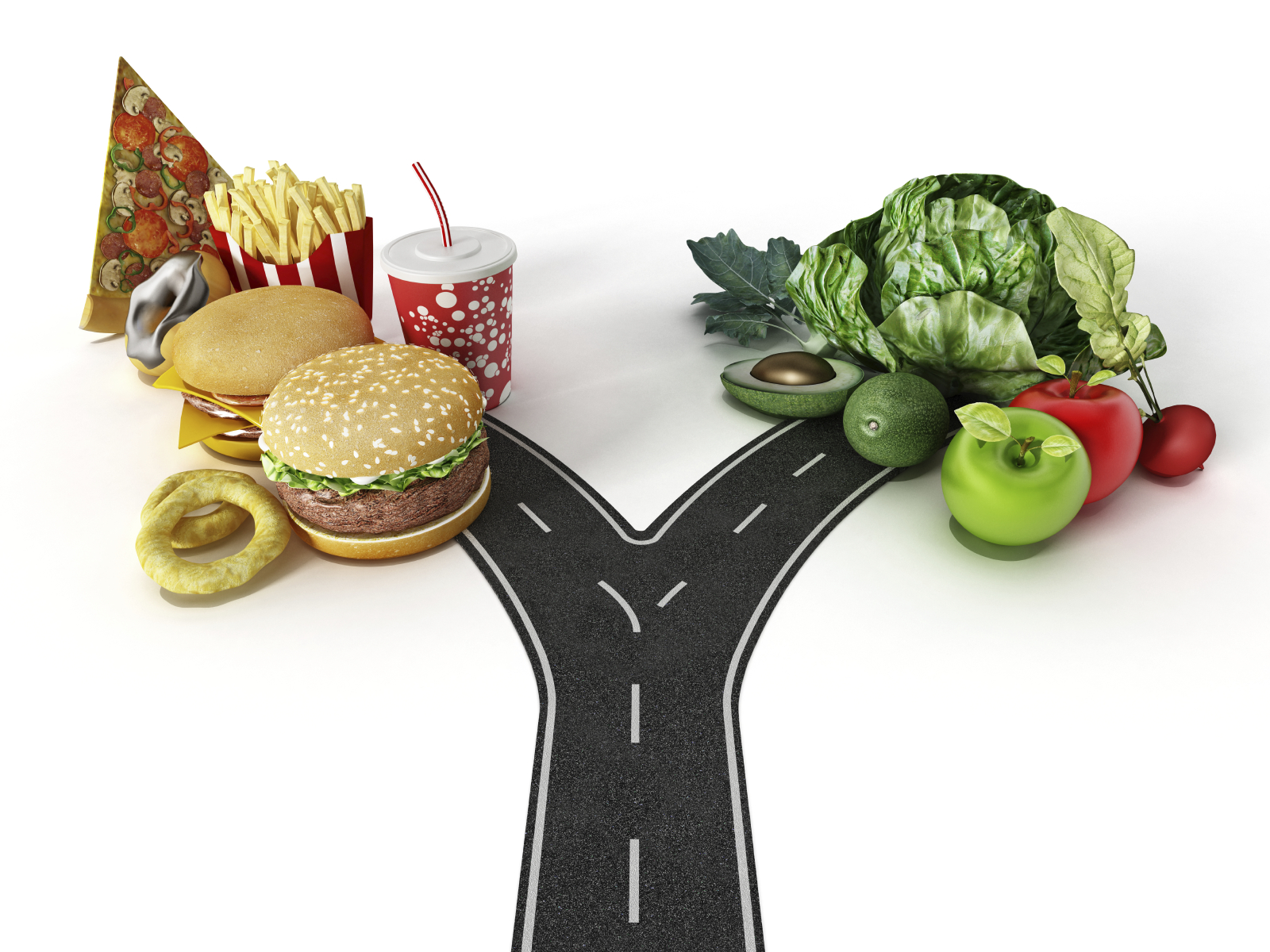
Reflecting interest in concepts of ‘nudging’ and ‘choice architecture’, there is increasing research and policy attention on altering aspects of the small-scale physical environment, such as portion sizes or product positioning, to change health-related behaviour. In a new paper, published in Nature Human Behaviour, we introduce a new framework we have developed: the Typology of Interventions in Proximal Physical Micro-Environments (TIPPME).
This provides a way to classify and describe an important class of interventions to change selection, purchase and consumption of food, alcohol and tobacco. This has the potential to benefit both researchers and policymakers through facilitating both the synthesis of cumulative evidence about the effects of interventions (including clearer reporting), and the identification and discussion of a broader range of interventions to be developed and evaluated.
The TIPPME intervention typology for changing environments to change behaviour. Hollands GJ, Bignardi G, Johnston M, Kelly MP, Ogilvie D, Petticrew M, Prestwich A, Shemilt I, Sutton S, Marteau TM
Access full text
Continue reading →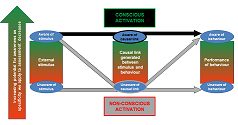
In a paper published in Health Psychology Review, we have proposed a framework for describing or categorising interventions to change behaviour by the degree to which their effects may be considered non-conscious. This is important because unhealthy behaviours often occur directly in response to environmental cues outside of conscious awareness, meaning that interventions that target non-conscious rather than conscious processes may have significant potential to shape healthier behaviours and improve health. However, examining this key premise requires a practicable conceptual framework that can be used to better describe and assess these interventions. This paper builds on a previous analysis by the same authors highlighting the importance of targeting automatic processes to change behaviour, published in Science in 2012.
Non-conscious processes in changing health-related behaviour: a conceptual analysis and framework. Hollands, Marteau, & Fletcher.
Access full text.
Continue reading → Our systematic review has produced the most conclusive evidence to date that people consistently consume more food and drink when offered larger-sized portions, packages or tableware than when offered smaller-sized versions.
Our systematic review has produced the most conclusive evidence to date that people consistently consume more food and drink when offered larger-sized portions, packages or tableware than when offered smaller-sized versions.
The size of this effect, based on combining data from 61 randomised controlled trials (6,711 participants), suggests that if sustained reductions in exposure to large sizes could be achieved across the whole diet, this could reduce average daily energy consumed from food by up to 16% (279 kcals) among UK adults.
Portion, package or tableware size for changing selection and consumption of food, alcohol and tobacco. Hollands, Shemilt, Marteau, Jebb, Lewis, Wei, Higgins & Ogilvie. 2015.
Access full text.
- To view Cochrane UK coverage of this Cochrane review in the ‘Evidently Cochrane’ blog (from 15/09), click here.
- To join the Twitter conversation about this Cochrane review, follow: @BHRUCambridge and #PortionSize
Continue reading → We conducted a large-scale systematic scoping review of evidence for the effects on diet, physical activity, alcohol and tobacco use of a wide range of physical environment (choice architecture) interventions, in settings such as restaurants, shops and workplaces. We were then able to map the existing evidence and identify important gaps in what we know to inform future research.
We conducted a large-scale systematic scoping review of evidence for the effects on diet, physical activity, alcohol and tobacco use of a wide range of physical environment (choice architecture) interventions, in settings such as restaurants, shops and workplaces. We were then able to map the existing evidence and identify important gaps in what we know to inform future research.
Altering micro-environments to change population health behaviour: towards an evidence base for choice architecture interventions. Hollands, Shemilt, Marteau, Jebb, Kelly, Nakamura, Suhrcke & Ogilvie. 2013.
Access full text
Continue reading →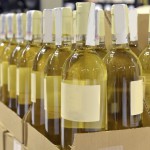 End-of-aisle displays are often used by supermarkets to promote sales. We found from our study that:
End-of-aisle displays are often used by supermarkets to promote sales. We found from our study that:
- Putting drinks on end-of-aisle displays increases sales of both alcoholic and non-alcoholic drinks. For alcohol, this sales increase was similar to 4–9% decrease in price.
- Limiting the use of aisle ends for alcohol and other less healthy products could be an effective way of increasing the healthiness of our weekly shopping.
Sales impact of displaying alcoholic and non-alcoholic beverages in end-of-aisle locations: An observational study. Nakamura, Pechey, Suhrcke, Jebb & Marteau, 2014.
Access full text
Continue reading →
Publications related to physical environment interventions (choice architecture):
2019
277300
physical environment interventions
2019
items
1
date
asc
http://www.bhru.iph.cam.ac.uk/wp-content/plugins/zotpress/
Pechey, R., Cartwright, E., Pilling, M., Hollands, G. J., Vasiljevic, M., Jebb, S. A., & Marteau, T. M. (2019). Impact of increasing the proportion of healthier foods available on energy purchased in worksite cafeterias: A stepped wedge randomized controlled pilot trial.
Appetite,
133, 286–296.
https://doi.org/10.1016/j.appet.2018.11.013
Hunter, J. A., Hollands, G. J., Pilling, M., & Marteau, T. M. (2019). Impact of proximity of healthier versus less healthy foods on intake: A lab-based experiment.
Appetite,
133, 147–155.
https://doi.org/10.1016/j.appet.2018.10.021
Mantzari, E., Galloway, C., Wijndaele, K., Brage, S., Griffin, S. J., & Marteau, T. M. (2019). Impact of sit-stand desks at work on energy expenditure, sitting time and cardio-metabolic risk factors: Multiphase feasibility study with randomised controlled component.
Preventive Medicine Reports,
13, 64–72.
https://doi.org/10.1016/j.pmedr.2018.11.012
Vasiljevic, M., Fuller, G., Pilling, M., Hollands, G. J., Pechey, R., Jebb, S. A., & Marteau, T. M. (2019). What is the impact of increasing the prominence of calorie labelling? A stepped wedge randomised controlled pilot trial in worksite cafeterias.
Appetite,
141, 104304.
https://doi.org/10.1016/j.appet.2019.05.035
Vasiljevic, M., Couturier, D. L., & Marteau, T. M. (2019). What are the perceived target groups and occasions for wines and beers labelled with verbal and numerical descriptors of lower alcohol strength? An experimental study.
BMJ Open,
9(6), e024412.
https://doi.org/10.1136/bmjopen-2018-024412
Clarke, N., Pechey, R., Pilling, M., Hollands, G. J., Mantzari, E., & Marteau, T. M. (2019). Wine glass size and wine sales: four replication studies in one restaurant and two bars.
BMC Research Notes,
12(1), 426.
https://doi.org/10.1186/s13104-019-4477-8
2018
277300
physical environment interventions
2018
items
1
date
asc
http://www.bhru.iph.cam.ac.uk/wp-content/plugins/zotpress/
Mantzari, E., Hollands, G. J., Pechey, R., Jebb, S., & Marteau, T. M. (2018). Perceived impact of smaller compared with larger-sized bottles of sugar-sweetened beverages on consumption: A qualitative analysis.
Appetite,
120, 171–180.
https://doi.org/10.1016/j.appet.2017.08.031
Hunter, J. A., Hollands, G. J., Couturier, D. L., & Marteau, T. M. (2018). Effect of snack-food proximity on intake in general population samples with higher and lower cognitive resource.
Appetite,
121, 337–347.
https://doi.org/10.1016/j.appet.2017.11.101
Crockett, R. A., King, S. E., Marteau, T. M., Prevost, A. T., Bignardi, G., Roberts, N. W., … Jebb, S. A. (2018). Nutritional labelling for healthier food or non-alcoholic drink purchasing and consumption.
Cochrane Database Syst Rev,
2(2), CD009315.
https://doi.org/10.1002/14651858.CD009315.pub2
Carter, P., Bignardi, G., Hollands, G. J., & Marteau, T. M. (2018). Information-based cues at point of choice to change selection and consumption of food, alcohol and tobacco products: a systematic review.
BMC Public Health,
18(1), 418.
https://doi.org/10.1186/s12889-018-5280-5
Hall, M. G., Marteau, T. M., Sunstein, C. R., Ribisl, K. M., Noar, S. M., Orlan, E. N., & Brewer, N. T. (2018). Public support for pictorial warnings on cigarette packs: an experimental study of US smokers.
J Behav Med,
41(3), 398–405.
https://doi.org/10.1007/s10865-018-9910-2
Vasiljevic, M., Couturier, D. L., Frings, D., Moss, A. C., Albery, I. P., & Marteau, T. M. (2018). Impact of lower strength alcohol labeling on consumption: A randomized controlled trial.
Health Psychol,
37(7), 658–667.
https://doi.org/10.1037/hea0000622
Hollands, G. J., Cartwright, E., Pilling, M., Pechey, R., Vasiljevic, M., Jebb, S. A., & Marteau, T. M. (2018). Impact of reducing portion sizes in worksite cafeterias: a stepped wedge randomised controlled pilot trial.
Int J Behav Nutr Phys Act,
15(1), 78.
https://doi.org/10.1186/s12966-018-0705-1
Langfield, T., Pechey, R., Pilling, M., & Marteau, T. M. (2018). Impact of glass shape on time taken to drink a soft drink: A laboratory-based experiment.
PLoS One,
13(8), e0202793.
https://doi.org/10.1371/journal.pone.0202793
Vasiljevic, M., Couturier, D. L., & Marteau, T. M. (2018). Impact on product appeal of labeling wine and beer with (a) lower strength alcohol verbal descriptors and (b) percent alcohol by volume (%ABV): An experimental study.
Psychol Addict Behav,
32(7), 779–791.
https://doi.org/10.1037/adb0000376
Pechey, R., & Marteau, T. M. (2018). Availability of healthier vs. less healthy food and food choice: an online experiment.
BMC Public Health,
18(1), 1296.
https://doi.org/10.1186/s12889-018-6112-3
Mantzari, E., Vasiljevic, M., Turney, I., Pilling, M., & Marteau, T. (2018). Impact of warning labels on sugar-sweetened beverages on parental selection: An online experimental study.
Prev Med Rep,
12, 259–267.
https://doi.org/10.1016/j.pmedr.2018.10.016
2017
277300
physical environment interventions
2017
items
1
date
asc
http://www.bhru.iph.cam.ac.uk/wp-content/plugins/zotpress/
Hollands, G. J., Carter, P., Shemilt, I., Marteau, T. M., Jebb, S. A., Higgins, J., & Ogilvie, D. (2017). Altering the availability or proximity of food, alcohol and tobacco products to change their selection and consumption.
Cochrane Database Syst Rev, (3. Art. No.: CD012573).
https://doi.org/10.1002/14651858.CD012573
Troy, D. M., Attwood, A. S., Maynard, O. M., Scott-Samuel, N. E., Hickman, M., Marteau, T. M., & Munafo, M. R. (2017). Effect of glass markings on drinking rate in social alcohol drinkers.
Eur J Public Health,
27(2), 352–356.
https://doi.org/10.1093/eurpub/ckw142
Mantzari, E., Hollands, G. J., Pechey, R., Jebb, S., & Marteau, T. M. (2017). Impact of bottle size on in-home consumption of sugar-sweetened beverages: a feasibility and acceptability study.
BMC Public Health,
17(1), 304.
https://doi.org/10.1186/s12889-017-4214-y
Vasiljevic, M., Cartwright, E., Pechey, R., Hollands, G. J., Couturier, D.-L., Jebb, S. A., & Marteau, T. M. (2017). Physical micro-environment interventions for healthier eating in the workplace: protocol for a stepped wedge randomised controlled pilot trial.
Pilot Feasibility Stud,
3(1), 27.
https://doi.org/10.1186/s40814-017-0141-z
Zupan, Z., Pechey, R., Couturier, D. L., Hollands, G. J., & Marteau, T. M. (2017). Micro-drinking behaviours and consumption of wine in different wine glass sizes: a laboratory study.
BMC Psychol,
5(1), 17.
https://doi.org/10.1186/s40359-017-0183-2
Pechey, R., Couturier, D.-L., Hollands, G. J., Mantzari, E., Zupan, Z., & Marteau, T. M. (2017). Wine glass size and wine sales: a replication study in two bars.
BMC Res Notes,
10(1), 287.
https://doi.org/10.1186/s13104-017-2610-0
Hollands, G. J., Bignardi, G., Johnston, M., Kelly, M. P., Ogilvie, D., Petticrew, M., … Marteau, T. M. (2017). The TIPPME intervention typology for changing environments to change behaviour.
Nature Human Behaviour,
1(8), 0140.
https://doi.org/10.1038/s41562-017-0140
2016
277300
physical environment interventions
2016
items
1
date
asc
http://www.bhru.iph.cam.ac.uk/wp-content/plugins/zotpress/
Pechey, R., Couturier, D. L., Hollands, G. J., Mantzari, E., Munafo, M. R., & Marteau, T. M. (2016). Does wine glass size influence sales for on-site consumption? A multiple treatment reversal design.
BMC Public Health,
16(1), 390.
https://doi.org/10.1186/s12889-016-3068-z
Mantzari, E., Wijndaele, K., Brage, S., Griffin, S. J., & Marteau, T. M. (2016). Impact of sit-stand desks at work on energy expenditure and sedentary time: protocol for a feasibility study.
Pilot Feasibility Stud,
2(1), 1–12.
https://doi.org/10.1186/s40814-016-0071-1
Lynch, R., & Cohn, S. (2016). In the loop: Practices of self-monitoring from accounts by trial participants.
Health (London),
20(5), 523–538.
https://doi.org/10.1177/1363459315611939
Hollands, G. J., & Marteau, T. M. (2016). Pairing images of unhealthy and healthy foods with images of negative and positive health consequences: Impact on attitudes and food choice.
Health Psychol,
35(8), 847–851.
https://doi.org/10.1037/hea0000293
Hollands, G. J., Marteau, T. M., & Fletcher, P. C. (2016). Non-conscious processes in changing health-related behaviour: a conceptual analysis and framework.
Health Psychol Rev,
10(4), 381–394.
https://doi.org/10.1080/17437199.2015.1138093
Carter, P., Hollands, G., & Marteau, T. (2016). Provision of information-based cues at point-of-choice for food, alcohol and tobacco selection and consumption: protocol for a systematic review, (CRD42016051884). Retrieved from
http://www.crd.york.ac.uk/PROSPERO/display_record.asp?ID=CRD42016051884
2015
277300
physical environment interventions
2015
items
1
date
asc
http://www.bhru.iph.cam.ac.uk/wp-content/plugins/zotpress/
Marteau, T. M., Hollands, G. J., & Kelly, M. P. (2015). Changing population behaviour and reducing health disparities: Exploring the potential of “Choice Architecture” interventions. In R. Kaplan, M. Spittel, & D. David (Eds.), Population Health: Behavioral and Social Science Insights. (pp. 105–126). Rockville, MD: Agency for Healthcare Research and Quality and Office of Behavioral and Social Sciences Research, National Institutes of Health.
Vasiljevic, M., Pechey, R., & Marteau, T. M. (2015). Making food labels social: The impact of colour of nutritional labels and injunctive norms on perceptions and choice of snack foods.
Appetite,
91, 56–63.
https://doi.org/10.1016/j.appet.2015.03.034
Forwood, S. E., Ahern, A. L., Hollands, G. J., Ng, Y. L., & Marteau, T. M. (2015). Priming healthy eating. You can’t prime all the people all of the time.
Appetite,
89, 93–102.
https://doi.org/10.1016/j.appet.2015.01.018
Forwood, S. E., Ahern, A. L., Marteau, T. M., & Jebb, S. A. (2015). Offering within-category food swaps to reduce energy density of food purchases: a study using an experimental online supermarket.
Int J Behav Nutr Phys Act,
12(1), 85.
https://doi.org/10.1186/s12966-015-0241-1
Pechey, R., & Monsivais, P. (2015). Supermarket choice, shopping behavior, socioeconomic status, and food purchases.
Am J Prev Med,
49(6), 868–877.
https://doi.org/10.1016/j.amepre.2015.04.020
Mantzari, E., Hollands, G. J., Pechey, R., Jebb, S. A., & Marteau, T. M. (2015). Impact of bottle size on in-home consumption of sugar-sweetened beverages: protocol for a feasibility and acceptability study.
Pilot Feasibility Stud,
1(1), 1–10.
https://doi.org/10.1186/s40814-015-0037-8
Pechey, R., Attwood, A. S., Couturier, D.-L., Munafò, M. R., Scott-Samuel, N. E., Woods, A., & Marteau, T. M. (2015). Does glass size and shape influence judgements of the volume of wine?
PLoS One,
10(12), e0144536.
https://doi.org/10.1371/journal.pone.0144536
2014
277300
physical environment interventions
2014
items
1
date
asc
http://www.bhru.iph.cam.ac.uk/wp-content/plugins/zotpress/
2013
277300
physical environment interventions
2013
items
1
date
asc
http://www.bhru.iph.cam.ac.uk/wp-content/plugins/zotpress/
Hollands, G. J., Shemilt, I., Marteau, T. M., Jebb, S. A., Kelly, M. P., Nakamura, R., … Ogilvie, D. (2013). Altering micro-environments to change population health behaviour: towards an evidence base for choice architecture interventions.
BMC Public Health,
13, 1218.
https://doi.org/10.1186/1471-2458-13-1218
2012
277300
physical environment interventions
2012
items
1
date
asc
http://www.bhru.iph.cam.ac.uk/wp-content/plugins/zotpress/
2011
277300
physical environment interventions
2011
items
1
date
asc
http://www.bhru.iph.cam.ac.uk/wp-content/plugins/zotpress/


 Reducing excess consumption of food and drink is core to tackling the high prevalence of overweight and obesity in the UK and elsewhere. Here we provide the results of a pilot trial estimating the potential impact of calorie labelling on energy purchased across six worksite cafeterias.
Reducing excess consumption of food and drink is core to tackling the high prevalence of overweight and obesity in the UK and elsewhere. Here we provide the results of a pilot trial estimating the potential impact of calorie labelling on energy purchased across six worksite cafeterias.
 Our systematic review has produced the most conclusive evidence to date that people consistently consume more food and drink when offered larger-sized portions, packages or tableware than when offered smaller-sized versions.
Our systematic review has produced the most conclusive evidence to date that people consistently consume more food and drink when offered larger-sized portions, packages or tableware than when offered smaller-sized versions. We conducted a large-scale systematic scoping review of evidence for the effects on diet, physical activity, alcohol and tobacco use of a wide range of physical environment (choice architecture) interventions, in settings such as restaurants, shops and workplaces. We were then able to map the existing evidence and identify important gaps in what we know to inform future research.
We conducted a large-scale systematic scoping review of evidence for the effects on diet, physical activity, alcohol and tobacco use of a wide range of physical environment (choice architecture) interventions, in settings such as restaurants, shops and workplaces. We were then able to map the existing evidence and identify important gaps in what we know to inform future research. End-of-aisle displays are often used by supermarkets to promote sales. We found from our study that:
End-of-aisle displays are often used by supermarkets to promote sales. We found from our study that:










